
- Region
- Águilas
- Alhama de Murcia
- Jumilla
- Lorca
- Los Alcázares
- Mazarrón
- San Javier
-
ALL AREAS & TOWNS
- AREAS
- SOUTH WEST
- MAR MENOR
- MURCIA CITY & CENTRAL
- NORTH & NORTH WEST
- TOWNS
- Abanilla
- Abarán
- Aguilas
- Alamillo
- Alcantarilla
- Aledo
- Alhama de Murcia
- Archena
- Balsicas
- Blanca
- Bolnuevo
- Bullas
- Cañadas del Romero
- Cabo de Palos
- Calasparra
- Camping Bolnuevo
- Campo De Ricote
- Camposol
- Canada De La Lena
- Caravaca de la Cruz
- Cartagena
- Cehegin
- Ceuti
- Cieza
- Condado de Alhama
- Corvera
- Costa Cálida
- Cuevas De Almanzora
- Cuevas de Reyllo
- El Carmoli
- El Mojon
- El Molino (Puerto Lumbreras)
- El Pareton / Cantareros
- El Raso
- El Valle Golf Resort
- Fortuna
- Fuente Alamo
- Hacienda del Alamo Golf Resort
- Hacienda Riquelme Golf Resort
- Isla Plana
- Islas Menores & Mar de Cristal
- Jumilla
- La Azohia
- La Charca
- La Manga Club
- La Manga del Mar Menor
- La Pinilla
- La Puebla
- La Torre
- La Torre Golf Resort
- La Unión
- Las Palas
- Las Ramblas
- Las Ramblas Golf
- Las Torres de Cotillas
- Leiva
- Librilla
- Lo Pagan
- Lo Santiago
- Lorca
- Lorquí
- Los Alcázares
- Los Balcones
- Los Belones
- Los Canovas
- Los Nietos
- Los Perez (Tallante)
- Los Urrutias
- Los Ventorrillos
- Mar De Cristal
- Mar Menor
- Mar Menor Golf Resort
- Mazarrón
- Mazarrón Country Club
- Molina de Segura
- Moratalla
- Mula
- Murcia City
- Murcia Property
- Pareton
- Peraleja Golf Resort
- Perin
- Pilar de la Horadada
- Pinar de Campoverde
- Pinoso
- Playa Honda
- Playa Honda / Playa Paraíso
- Pliego
- Portmán
- Pozo Estrecho
- Puerto de Mazarrón
- Puerto Lumbreras
- Puntas De Calnegre
- Region of Murcia
- Ricote
- Roda Golf Resort
- Roldan
- Roldan and Lo Ferro
- San Javier
- San Pedro del Pinatar
- Santiago de la Ribera
- Sierra Espuña
- Sucina
- Tallante
- Terrazas de la Torre Golf Resort
- Torre Pacheco
- Totana
- What's On Weekly Bulletin
- Yecla


- EDITIONS:
 Spanish News Today
Spanish News Today
 Alicante Today
Alicante Today
 Andalucia Today
Andalucia Today

article_detail
Spanish News Today Editors Roundup Weekly Bulletin Nov 29
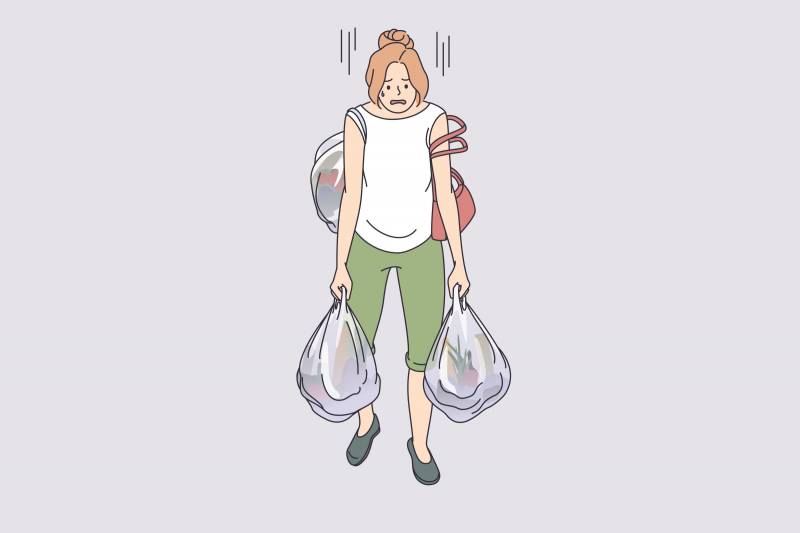
TOP STORIES: "How to survive Black Friday and keep your sanity" & "Spain's bus driver strike could continue to cause travel woes this December"
We inch ever closer to December, and after a partial cancellation of the Spanish bus driver strike following a pension agreement between employers and one of the unions representing the striking workers, public transport passengers in Spain were quietly optimistic that there would not be widespread travel disruption this Christmas, though perhaps they were overly hasty.
But first, you know what day it is today, right?
The blackest day of the year
There was a time when the words ‘Black Friday’ meant something completely different. It used to refer to any number of global events that happened to occur on a Friday and which caused destitution and despair, most notably the US financial crash of 1869 (yep, I’ve done my homework this week).
Now, though, instead of referring to the calamity caused by the excesses of the capitalist regime, Black Friday means… wait, it’s not changed all that much after all.
Although now they call it ‘Black Week’ in some parts (not to be confused with Black History Month) as it sprawls over into Cyber Monday on December 2. Cyber Monday is also a bit of a misnomer as there are basically discounts on more than just tech items and it’s on more than just the Monday.
Either way, this Black Fortnight is supposed to be a golden opportunity to nab a bargain before Christmas, whether that’s on experiences, flights, entrance tickets to stuff, toys, clothes, books, you name it. But let’s be honest; it’s actually less about what we need and more about what retailers can convince us to buy.
 The imported tradition of Black Friday has been whole-heartedly embraced in Spain, as it has in the rest of the world, with the same enthusiasm as Halloween and pumpkin-spiced lattes, but perhaps with a pinch less self-awareness.
The imported tradition of Black Friday has been whole-heartedly embraced in Spain, as it has in the rest of the world, with the same enthusiasm as Halloween and pumpkin-spiced lattes, but perhaps with a pinch less self-awareness.Shops like El Corte Inglés, PcComponentes and Decathlon dangle discounts so tantalising that it’s easy to forget we just spent the last 11 months complaining about the cost of living. Who needs electricity when you’ve scored 40% off a smart TV?
But mostly gone are the days when we would see those videos of stampedes of people clamouring at the door of shops, waiting for them to open to be the first to charge in and buy whatever it was they so desperately needed in their life. Now, most Black Friday shopping happens online, so everyone can take part in the spending frenzy without the risk of being trampled.
But before you dive headfirst into the mayhem, a word to the wise: not all that glitters is gold, or even a decent discount. Maybe without us even knowing, retailers have been honing their predatory marketing skills for months, crafting offers that exploit every cognitive bias of human psychology in the book.
For instance, the concept of ‘scarcity bias’ convinces you that if you don’t buy that air fryer now, you’ll never eat crispy chips again, while ‘anchoring bias’ makes you marvel at the 70% discount without questioning why the original price of that toaster was ever 300 euros. And let’s not forget the classic bait-and-switch: inflating prices weeks beforehand so the “savings” look oh-so-generous.
Of course, none of this would work without a good dose of urgency. The words “limited offer” and “while stocks last” drive us to click “buy now” faster than you can say “buyer’s remorse”. Social media feeds, flooded with triumphant posts of shopping conquests, only add fuel to the fire. No one wants to be the sad sack who missed out on the deal of the century, even if that deal turns out to be 10% off socks (missing a toe?).
But are the deals worth the hype? Rarely. The fleeting dopamine rush of snagging a bargain fades as quickly as the battery life of that new gadget you just bought on AliExpress. Like the house in a casino, the real winners here are, as ever, the retailers. They sit back and rake in the profits while we, the consumers, bask in the glow of our supposed savvy shopping skills. You might call that a win-win. Others might call it being taken for a ride.
So, how to survive this annual test of financial willpower? Experts suggest making a list (preferably one that doesn’t include “random junk”) to compare prices, and, most importantly, resist the siren song of artificially created urgency.
If you’re worried about missing out, don’t be. The January sales and countless other manufactured opportunities to spend are just around the corner. Truly, there’s always another chance to empty your wallet.
Black Friday is less a shopping event and more a social experiment in mass manipulation. It’s a day (or week, or month) that lays bare our susceptibility to slick marketing and our own desire to feel like we’re getting a good deal, even if we’re not. Whether you dive into the madness or sit it out, remember this: the only real winners are the retailers. The rest of us are just pawns in their grand game of consumerism.
Busman’s holiday
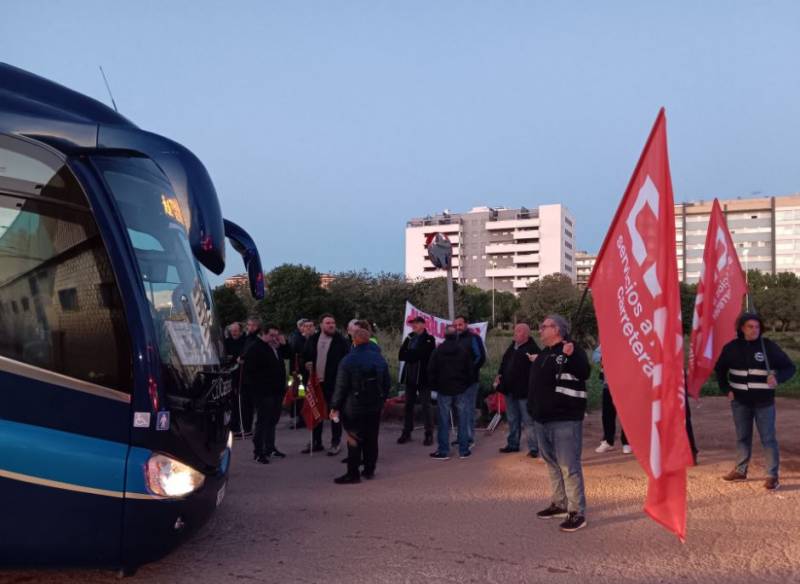
It seems like in the run-up to Christmas every year there’s some sort of strike taking place, contriving to make our lives more difficult. Of course, the unions know what they’re doing – the more hardship or disruption their industrial action causes, the more likely it is that the powers that be will cut a quick deal.
This year it’s the turn of the bus drivers to go on strike, aiming to secure a better early retirement deal from the Spanish government. The strikes, which initially began on October 28 and involved around 80,000 professional drivers at the outset, are scheduled to continue sporadically until December 9. If an agreement isn’t reached after this date, the work stoppages will continue indefinitely from December 23 onwards, potentially causing all sorts of transport chaos over Christmas.
There was major relief earlier this week when UGT, the Spanish union representing the lion’s share of the drivers, called off the industrial action after reaching an agreement with the Spanish Confederation of Bus Transport (Confebús) to lower the early retirement age of these professional drivers.
Sadly, this was short-lived. Several other representatives of the workers have decided to maintain their strike action, including CCOO, CGT, Sindicato Libre de Transportes and USO. And while UGT is the largest union, CCOO still handles around 40% of the drivers, so this was still a major blow to travellers.
These unions have several issues with the proposed agreement. Chief among them is the worry that the early retirement deal simply won’t come to fruition. In order for it to pass into law, Confebús will now need to ask the Evaluation Commission to develop new regulations. However, the general secretary of the Road and Logistics sector of FSC-CCOO, Francisco José Vegas Rosado, has pointed out that the Commission could still veto the application, particularly if there is not enough money in the public coffers to cover the cost of early retirement.
Furthermore, the opposition unions are annoyed about how many hoops they have to jump through to secure this right for their workers: if the early retirement deal goes through, it will likely be February before it comes into force, whereas previous strikes by other transport workers saw results in just 20 days.
The upshot of all this is that almost half of Spanish bus drivers – this includes city and rural transport, school buses, long-distance coaches and more – have been continuing with their strike action this November 28 and 29.
To mitigate a potential transport crisis, the Spanish government has decreed that bus drivers must still provide a minimum of 50% of their usual services throughout the industrial action, and so far the disruption appears to be fairly minimal up and down the country.
In the Region of Murcia, another issue has cropped up, as countless passengers have booked long-distance coach trips on the strike dates which will now be cancelled. The major operators in the Region have advised customers that they will be contacted shortly and offered an alternative travel date, but this is still a real annoyance and inconvenience.
In the rest of Spain, minimum bus services have been provided this Thursday and Friday, although what ‘minimum’ actually means varies from region to region.
In Catalonia, for example, 40% of buses will run during peak hours but this will be reduced to 20% the rest of the time. In Madrid, intercity trains will have 80% of their services during peak hours and 45% during off-peak hours.
If no new deal is reached at the end of these two days of strikes, the next round of work stoppages is planned for Thursday December 5 and then Monday 9.
Murcia
 After the dry summer, it was nice to get some rain in Murcia earlier this month, even if it did cause some flooding. Thanks to recent downpours, the reservoirs of the Segura basin have risen to 20.3% of their full capacity. Not exactly brimming with success, but at least it’s more than we had at this same time last year, and the prospect of more (hopefully less torrential) rain to come should serve to continue topping up our water reserves.
After the dry summer, it was nice to get some rain in Murcia earlier this month, even if it did cause some flooding. Thanks to recent downpours, the reservoirs of the Segura basin have risen to 20.3% of their full capacity. Not exactly brimming with success, but at least it’s more than we had at this same time last year, and the prospect of more (hopefully less torrential) rain to come should serve to continue topping up our water reserves.It’s still about a third less water than the average for this time of year, but between pumping water down from the Tagus River and the much-touted use of desalination plants, Murcia should be able to avoid hosepipe bans for a few months longer.
There is plenty going on on Murcia’s roads. In the area near Hacienda del Álamo Golf Resort and Corvera, the RM-E6 will be closed to traffic this weekend and on Monday for road improvements. In the Mar Menor area, 1.8 million euros are being funnelled into upgrading key routes. La Manga’s expressway, the RM-12, is getting a shiny new surface, better barriers and updated road signs, while over in San Pedro del Pinatar another half a million euros is being spent on sprucing up pedestrian zones and bike lanes with tactile paving and green spaces.
Also in La Manga, a police raid this Tuesday has stirred up a storm of speculation. Following the bizarre and tragic accident that took place on the RM-12 a couple of weeks ago when a runaway drug smuggling boat killed two British nationals, it turns out said boat was supposedly under police custody when it took its fateful joyride.
Authorities are now investigating whether this accident was a freak occurrence or part of some sketchy misuse of confiscated goods. They raided the judicial custody building itself, where seized goods such as boats are supposed to be stored under lock and key, to see if the vehicles from there could be being spirited away for dodgy purposes.
On the brighter side, Mazarrón has become the first town in the Region of Murcia to be named a ‘Magical Town of Spain’, a win for the municipality’s tourism ambitions. The designation recognises Mazarrón’s efforts in balancing historical charm with sustainable development.
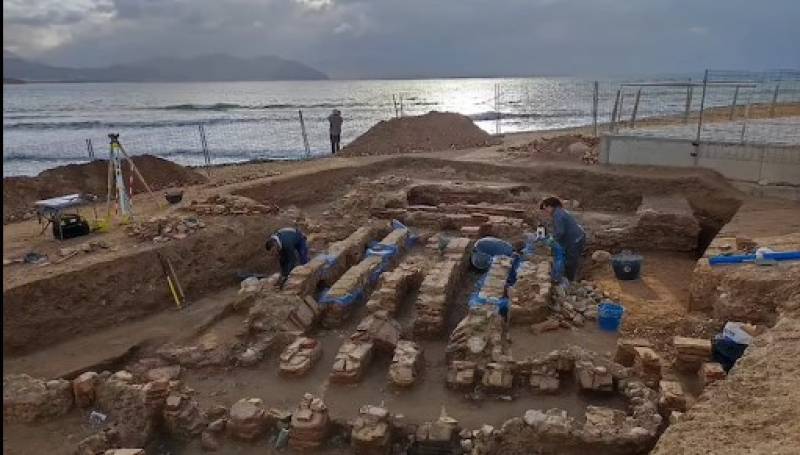 As part of this, Mazarrón is also digging into its past – literally! Archaeologists have been unearthing treasures at the Roman villa of Alamillo in the Port of Mazarrón, including a caldarium (essentially a Roman sauna). It’s the kind of discovery that gives a whole new meaning to the words “hot property”. Once the excavation wraps up, the site will be integrated into the seafront promenade, which should make for a fascinating detour between beach strolls.
As part of this, Mazarrón is also digging into its past – literally! Archaeologists have been unearthing treasures at the Roman villa of Alamillo in the Port of Mazarrón, including a caldarium (essentially a Roman sauna). It’s the kind of discovery that gives a whole new meaning to the words “hot property”. Once the excavation wraps up, the site will be integrated into the seafront promenade, which should make for a fascinating detour between beach strolls.But ‘Most Magical Town of Spain’ isn’t the only accolade being thrown around right now. Murcia has just earned a culinary shoutout from The Guardian when the UK newspaper recently waxed lyrical about Gaia Espacio Gastronómico, a restaurant in Murcia city that serves up a nouvelle cuisine version of traditional Murcia dishes, while Murcia café Vértigo y Calambre has been named among the 100 best coffee shops in the world for 2025.
While Mazarrón shines for its tourist offering and Murcia for its food establishments, Cartagena has decided that the empty shopfronts in the city centre are better off as homes. In a move that smacks of equal parts ingenuity and mild desperation, disused commercial spaces are increasingly being converted into residential properties. Out with the dusty old hardware stores, in with modern flats for students and holidaymakers.
Of course, the process isn’t without its headaches. Cartagena is like a living museum, and its historic neighbourhoods have strict rules about light, airflow and archaeological surprises which mean that reformations are a bit of a minefield and potentially very costly for developers. Which is why the city council has promised to loosen up restrictions a bit and keep up with the times, while still maintaining protections for historical, a balancing act that’s as delicate as it is necessary.
There is a rare chance this Saturday to enjoy a guided tour in English of Alhama de Murcia’s fascinating archaeological site Las Paleras for just 2-3 euros per person. This is also the weekend when the ADAPT theatre group are performing their panto ‘Snow White and the Seven Guiris’ in San Pedro del Pinatar and when the annual motor show takes place at the IFEPA convention centre in Torre Pacheco. If none of those takes your fancy, you could try the craft markets in San Javier and in Bullas on Sunday, or else join in the fun Ugly Christmas Sweater party up at Lorca castle!
Be sure to see our EVENTS DIARY for more events and activities coming up soon in the Region of Murcia:
Spain
For most visitors to Spain and indeed long-term residents, a sun-soaked day at the beach is synonymous with the Spanish lifestyle. Yet for millions of individuals with reduced mobility, this quintessential experience remains an unattainable dream.
A startling new report has revealed that more than 80% of Spain’s beaches are not adapted for people with disabilities, effectively barring access to one of the nation’s most treasured attractions.
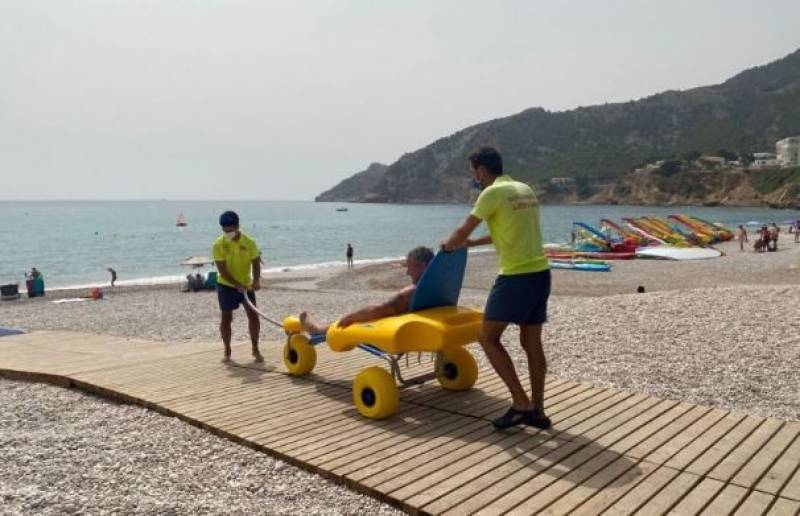
Spain is home around 4 million people with disabilities, and for those over 60, a demographic that’s growing every year, mobility challenges are common. The country has 3,600 stunning beaches but today, a mere 600 of them – that’s just a fifth – are fully equipped to allow people with mobility issues to access the sand and sea independently and safely.
Experts argue that this is more than just a shortcoming; it’s a denial of fundamental rights.
According to Diego González, president of the Ibero-American Network of Accessible Tourism, if Spain doesn’t evolve and shape up its beaches, demand from abroad will plummet and tourists will simply travel elsewhere.
Spain’s struggle is part of a larger global challenge and according to the World Health Organisation, 1.3 billion people worldwide, 15% of the population, live with disabilities. For them, travel and leisure are still riddled with obstacles.
For a country like Spain, where tourism represents 13% of GDP and generates 14% of employment, Mr González added, the need for accessible tourism infrastructure is not just a moral obligation, it’s an economic necessity.
Those of a certain age will remember scouring the house for glass bottles as a child, keen to return them and exchange their treasure for cold, hard cash. True, it was only a pittance, but it unwittingly taught us how to recycle and clean up our neighbourhoods.
Today, the environmental challenge stems more from plastic than glass, but many European countries have resurrected this age-old ‘deposit, return and refund’ tradition to encourage people to recycle their plastic bottles.
Spain is definitely late to the party, but the government has just announced that it’s going to revive this scheme by 2026. If embraced by schoolchildren and adults alike, this initiative could revolutionise the way Spain tackles plastic pollution, and it’s about time.
For decades, conservation groups in Spain have been advocating for a more effective way to recycle plastic bottles. The current system, which relies on separate collection and recycling, has fallen short of its goals. In 2023, a staggering 60% of plastic bottles weren’t properly disposed of, leaving a significant amount of plastic waste to pollute the environment.
The new system is a modern take on the traditional ‘return the empties’ system for glass bottles, where consumers pay a small deposit when purchasing a packaged product and receive a refund when they return the empty container. This approach has been a game-changer in countries like Germany, where it’s increased recycling rates exponentially.
 If you’re any bit queasy, this next piece of news might just cause you to lose your breakfast – or your dinner, as it happens.
If you’re any bit queasy, this next piece of news might just cause you to lose your breakfast – or your dinner, as it happens.A new study by Spain’s Animal Welfare Observatory (OBA) has revealed that nearly 98% of chicken sold in Lidl stores contains ‘white streaks’, a sign of muscular disease that drastically lowers meat quality.
While not harmful to humans, the streaking increases fat by up to 224%, calories by 21%, and decreases protein and collagen content, raising concerns about the nutritional value of the meat.
Although Lidl has insisted that the streaks are common among many other supermarkets and don’t actually compromise the standard of the meat, the news is causing concern for many customers who watch the quality of the produce they buy, not to mention their waistlines.
The issue has also caused uproar among animal rights activists. It turns out that the white streaks are linked to the disproportionate growth of the animal, whose objective is to achieve a higher yield of meat. The white striping develops due to the continuous breakdown and reconstruction of the muscle caused by its rapid growth.
According to veterinarian Miriam Martínez of the OBA, “Their growth is so fast and unnatural that it would be equivalent to a human baby reaching 300 kilos in its first two months of life.” Gross!
Alicante
A devastating explosion at a polystyrene manufacturing warehouse in Ibi, Alicante, has left three men dead and several others injured, three of them seriously. The fatal victims, aged 51, 29 and 21, were among the 39 employees present at the time of the blast, which occurred at midday on Wednesday November 27.
The explosion caused catastrophic structural damage, obliterating the roof and parts of the walls, trapping several workers under the rubble. Emergency responders and locals quickly formed a human chain to rescue survivors, pulling debris aside in desperate efforts to free those trapped.
Among the deceased were two Spanish nationals and one Ecuadorian resident, all living in Ibi or nearby Xixona. Two worked at the factory, while the third was in an adjacent warehouse struck by the force of the explosion.
Eyewitnesses described the blast, which shook Avenida del Juguete, as “tremendous”. Debris, including large blocks of polystyrene, littered the area. Screams for help could be heard from inside the factory, adding to the chaos as workers and bystanders rushed to assist.
Early reports indicate that the tragedy was caused by a boiler bursting, but a full investigation will now be carried out by the authorities.
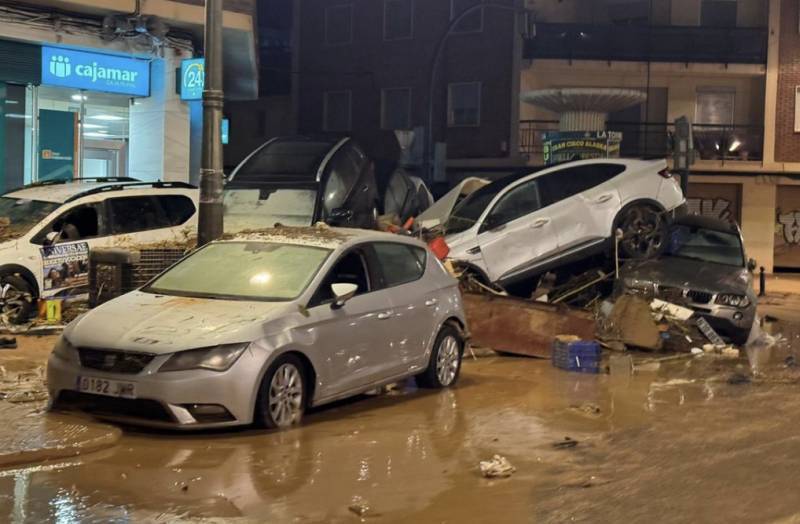 Valencia is still grappling with the aftermath of the devastating DANA floods, which left around 120,000 vehicles damaged or completely written off. The massive task of clearing them is now underway, with crews focusing on the hardest-hit areas.
Valencia is still grappling with the aftermath of the devastating DANA floods, which left around 120,000 vehicles damaged or completely written off. The massive task of clearing them is now underway, with crews focusing on the hardest-hit areas.Schools are being prioritised to ensure kids can get back to normal routines without navigating through flood-damaged cars and debris.
The Department for the Environment has set up a dedicated platform called Som Solidaritat so owners can check where their vehicles ended up and what condition they’re in.
To speed things up, the government is rolling out new measures to simplify the process of appraising and disposing of flood-damaged vehicles. It’s all part of a plan to help Valencia recover and prevent these wrecks from becoming a long-term headache for communities.
And even while the clean-up operation pushes on, the death toll continues to rise. On Monday, rescue teams found another body in Vilamarxant, bringing the number of lives lost in the October 29 floods to 222. It’s a heartbreaking reminder of just how much the Valencian Community has endured and what a long road there still is to recovery.
There’s some brilliant news for frequent fliers in Alicante as the Ministry of Transport has just announced a huge project to improve several roads in and around Orihuela and Torrevieja and, crucially, on up to Alicante Airport.
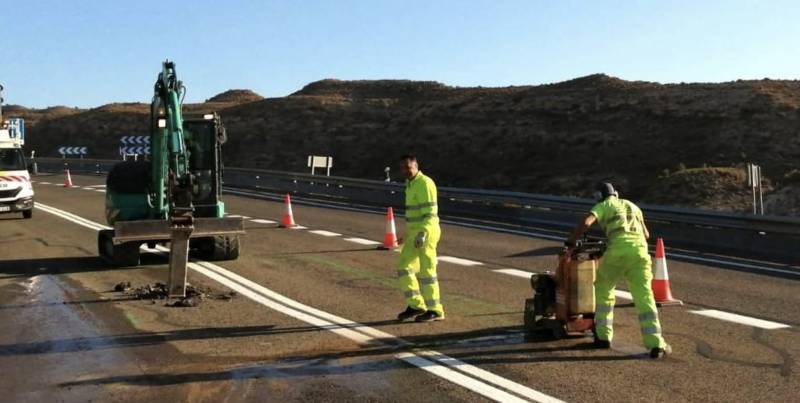
Specifically, this involves the N-340 road, from kilometre 678.814 (in Orihuela) to the airport terminal and on the N-332, from kilometre 38.810 (Pilar de la Horadada) to the junction with the airport. At this point, the access road to the airport (N-338) will also be improved in its connection to the A-70 motorway.
According to information published by the Ministry of Transport, the tender includes the N-325, from kilometre 3.789 (Novelda) to km 20.200 (Crevillent). In addition to the aforementioned roads, all of which are included in sector 4 of the province of Alicante, the contract also covers the surface rehabilitation of the road surface on the N-340, from km 710 to 716.260, Elche-Crevillent section.
It’s still a little way off though as the contract is only now ready to put out to tender. Once a workforce has been selected, the job, worth around 15.8 million euros, will initially be set for three years with the option to extend it for another two.
Get ready to feel the holiday spirit at The Trinity Bar’s enchanting Christmas Market in the heart of Cabo Roig. Taking place every Friday afternoon in the lead-up to Christmas, this magical event is the perfect way to kick off the festive season.
Stroll through the charming outdoor terrace filled with unique, handcrafted gifts and decorations that make holiday shopping a joy. From one-of-a-kind Christmas crafts to seasonal treasures, you’ll find something special for everyone on your list.
But the market is just the beginning. Kids will light up with excitement as they visit Santa’s Grotto, and the sounds of carol singers will fill the air, spreading cheer to shoppers of all ages.
Save the dates – November 29, December 6, 13 and 20 – and head to The Trinity Bar, located just behind the famous Cabo Roig strip.
Whether you’re hunting for the perfect gift or simply soaking in the holiday vibes, this festive market is an experience you won’t want to miss.
If you’re a talented artisan interested in setting up a stall at the Christmas Craft Market, you can send a message to The Trinity Bar through their Facebook page to reserve your spot.
For other events and activities happening in the area, check out the What’s On page of Alicante Today or join the Costa Blanca What’s On and Where to Go Facebook group
Andalucía
Another victim of the recent DANAs in Spain, Málaga’s beaches were transformed into a dumping ground for reeds and debris a couple of weeks back. But now the government is pumping in a record 2.1-million-euro investment into getting the beaches of the Costa del Sol back up to scratch again.
The plan is to redistribute the sand that was misplaced and to landscape the playas a bit so that the entire coast is prepared for tourists and Instagram-ready by April. Just to be clear, though – you can still go to the beach before then; they’ll still be open for a spot of Christmas sunbathing or a New Year’s Day dip in the sea and you probably won’t have to contend with too many tractors driving you’re your towel.
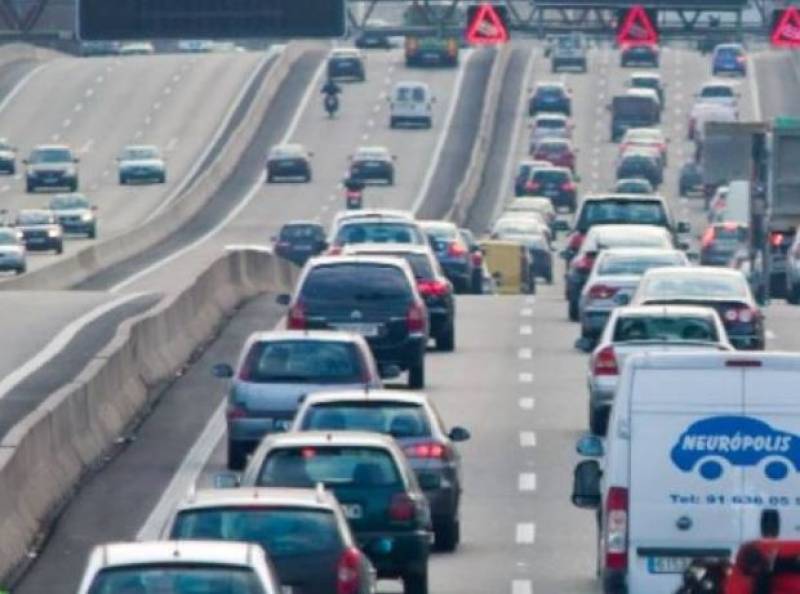 Moving slightly inland, Málaga drivers are cautiously optimistic about proposed discounts on the road tolls of the AP-7 motorway. This announcement comes after months of outrage when tolls around congested Alicante city were waived for the summer, leaving the equally backed-up Málaga residents to stew in a mix of traffic and indignation.
Moving slightly inland, Málaga drivers are cautiously optimistic about proposed discounts on the road tolls of the AP-7 motorway. This announcement comes after months of outrage when tolls around congested Alicante city were waived for the summer, leaving the equally backed-up Málaga residents to stew in a mix of traffic and indignation.Now there’s talk of reduced charges on the AP-7, but here’s the sticking point – it’s only for students and frequent users of this road. It’s a small step forward to easing the area’s frequent traffic jams and has been touted as an initial measure to try to improve the traffic situation while the coastal train is under debate. It is hardly the revolution locals were hoping for but other steps such as the use of reversible lanes on the A7 should slowly get things moving again.
And not a moment too soon as it only looks set to get busier and busier on Andalucía’s roads. The region is patting itself on the back for what looks like it will shape up to be its best year for tourism ever, and 2025 will probably break that record.
The regional tourism minister, Arturo Bernal, is positively glowing, touting a 7.8% rise in visitors and a hefty 19.63 billion euros in revenue for the first nine months of 2024, with out-of-season tourism becoming more profitable this year.
Tourists are spending more in the south of Spain, and new markets like Asia and the US are discovering Andalucía, providing a fresh source of income to compete with the northern European holidaymakers.
But beneath this golden glow of prosperity lurks a darker undertone. As revenues soar, so do the simmering tensions over tourism’s impact on local communities, as evidenced in the anti-tourism protests and the marches for decent housing that we have seen in recent months.
As young people grapple with rising living costs and struggle to find a decent rental, let alone get on the property ladder, murmurs of discontent grow louder. How long can Andalucía ride the tourism wave before the swell crashes into the rocky shore of socio-economic reality?
Zooming back in on Málaga province, the search continues for a British woman who vanished after touching down at Málaga airport over six weeks ago. Tanya’s disappearance has prompted a desperate plea from her family on social media, who described her as “an extremely high-risk, vulnerable person”.
Her absence raises grave concerns for her safety, The last notification from the police was that she was heading to Málaga airport on October 14 and no one has had any contact from her since. Authorities are urging anyone with information to come forward.

You may have missed…
- Spanish pensions will shoot up by 600 euros next year.
The average monthly pension payment in Spain is due to increase by around 2.8% in 2025. - Explosion in Murcia? Massive bang from military aircraft prompts calls to 112.
Emergency services received numerous calls about a loud explosion that was heard in various parts of Murcia this Thursday afternoon and which turned out to be a military-grade plane that was crossing the Region as part of a NATO training exercise. - A Murcia University professor has told the world how to save Earth from asteroid collision.
A professor from the University of Murcia has come up with an equation that can be used by NASA to spot killer asteroids heading for our planet. - British tourist fighting for his life following Benidorm attack.
A 42-year-old man from St Helens in Merseyside is battling for his life in a Spanish hospital after a brutal attack in Benidorm. Tragedy struck when Andrew was allegedly punched in the head while on a night out, resulting in a severe brain injury. - Spain introduces groundbreaking ‘climate leave’ following Valencia floods.
Spain has taken a significant step in addressing the challenges posed by climate emergencies with the introduction of “climate leave”, a paid work absence of up to four days during catastrophes or extreme weather events.
And that’s the end of our Black Friday special. Hope you enjoyed it, and happy shopping! We’ll be back with your next bulletin on Friday December 6, which also happens to be a festivo.
See ya then!
article_detail
Find more information by AREA, TOWN or URBANISATION .....
Cabo de Palos
Cartagena
El Carmoli
Islas Menores and Mar de Cristal
La Manga Club
La Manga del Mar Menor
La Puebla
La Torre Golf Resort
La Union
Los Alcazares
Los Belones
Los Nietos
Los Urrutias
Mar Menor Golf Resort
Pilar de la Horadada
Playa Honda / Playa Paraiso
Portman
Roldan and Lo Ferro
San Javier
San Pedro del Pinatar
Santa Rosalia Lake and Life resort
Terrazas de la Torre Golf Resort
Torre Pacheco
Cartagena
El Carmoli
Islas Menores and Mar de Cristal
La Manga Club
La Manga del Mar Menor
La Puebla
La Torre Golf Resort
La Union
Los Alcazares
Los Belones
Los Nietos
Los Urrutias
Mar Menor Golf Resort
Pilar de la Horadada
Playa Honda / Playa Paraiso
Portman
Roldan and Lo Ferro
San Javier
San Pedro del Pinatar
Santa Rosalia Lake and Life resort
Terrazas de la Torre Golf Resort
Torre Pacheco
Aguilas
Aledo
Alhama de Murcia
Bolnuevo
Camposol
Condado de Alhama
Fuente Alamo
Hacienda del Alamo Golf Resort
Lorca
Mazarron
Puerto de Mazarron
Puerto Lumbreras
Sierra Espuna
Totana
Aledo
Alhama de Murcia
Bolnuevo
Camposol
Condado de Alhama
Fuente Alamo
Hacienda del Alamo Golf Resort
Lorca
Mazarron
Puerto de Mazarron
Puerto Lumbreras
Sierra Espuna
Totana
Abanilla
Abaran
Alcantarilla
Archena
Blanca
Corvera
El Valle Golf Resort
Hacienda Riquelme Golf Resort
Lorqui
Molina de Segura
Mosa Trajectum
Murcia City
Peraleja Golf Resort
Ricote
Sucina
Abaran
Alcantarilla
Archena
Blanca
Corvera
El Valle Golf Resort
Hacienda Riquelme Golf Resort
Lorqui
Molina de Segura
Mosa Trajectum
Murcia City
Peraleja Golf Resort
Ricote
Sucina
Urbanisations
CamposolCondado de Alhama
El Valle Golf Resort
Hacienda del Alamo Golf Resort
Hacienda Riquelme Golf Resort
Islas Menores and Mar de Cristal
La Manga Club
La Torre Golf Resort
Mar Menor Golf Resort
Mazarron Country Club
Mosa Trajectum
Peraleja Golf Resort
Santa Rosalia Lake and Life resort
Terrazas de la Torre Golf Resort
La Zenia
Lomas de Cabo Roig
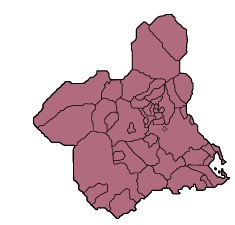
Important Topics:
CAMPOSOL TODAY Whats OnCartagena SpainCoronavirusCorvera Airport MurciaMurcia Gota Fria 2019Murcia property news generic threadWeekly Bulletin
CAMPOSOL TODAY Whats OnCartagena SpainCoronavirusCorvera Airport MurciaMurcia Gota Fria 2019Murcia property news generic threadWeekly Bulletin
Contact Murcia Today: Editorial 000 000 000 /
Office 000 000 000




